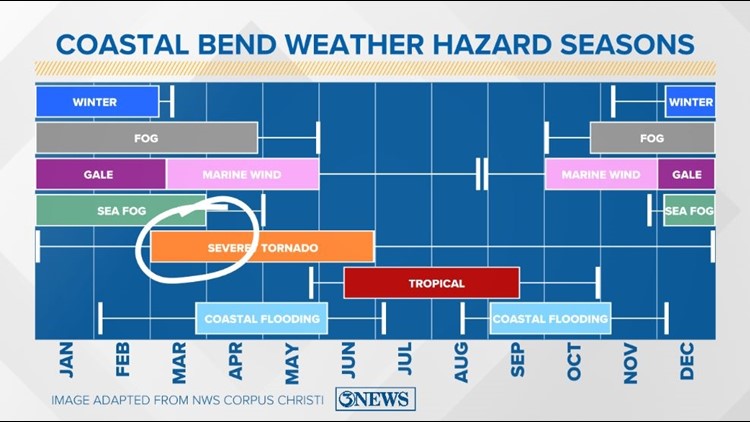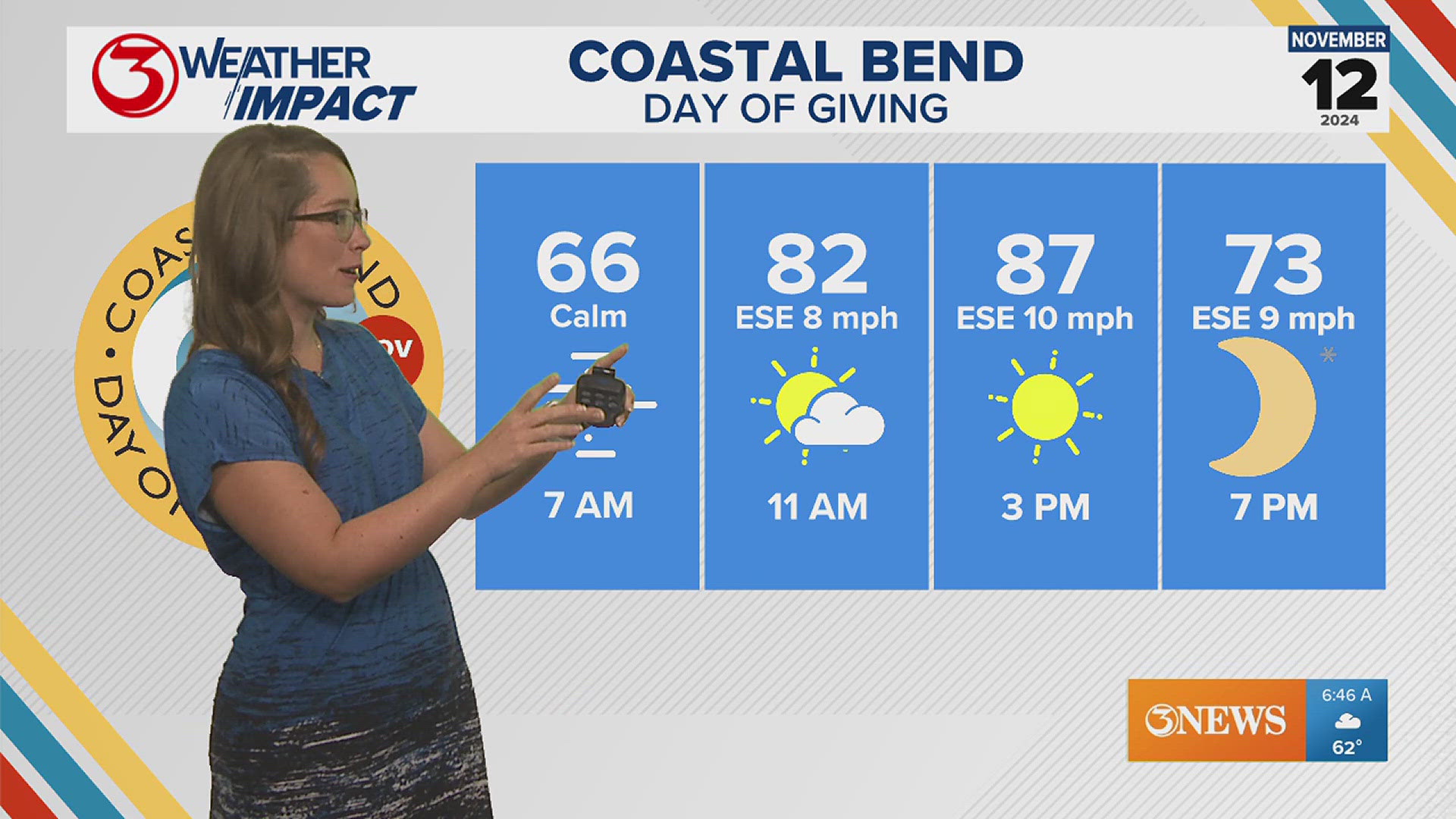CORPUS CHRISTI, Texas — Spring is just around the corner, and with the change of seasons comes a change of weather. Our dry and relatively cool afternoons give way to warmer temperatures, higher humidity, and increased thunderstorm activity.
March 7-11 is Severe Weather Awareness Week. Severe weather can occur anywhere - it's been reported in all 50 states. "Severe weather" encompasses many different types of weather and their related hazards. Heavy rain, strong winds, lightning, large hail, and tornadoes are all hazards associated with severe weather.


Thunderstorms are sometimes underestimated as serious weather threats, but they can be deadly. Strong winds can turn ordinary objects into dangerous projectiles, and lightning can strike up to 10 miles away from a storm.
What is a severe thunderstorm?
A severe thunderstorm must have at least one of the following: wind gusts of 58+ mph, 1 inch hail, and/or a tornado.
Lightning and rainfall do not qualify a thunderstorm as severe or not severe.
What's the difference between a watch and a warning?
A watch means be prepared - severe weather is possible. A watch area is typically large, covering numerous counties or even states.
A warning means take action and seek shelter - severe weather is occurring or will occur shortly. A warning typically encompasses a much smaller area than a watch.


Wind, Hail, and Flooding in Thunderstorms: Tree damage is expected from high winds, and other loose objects can become airborne and dangerous. Hail can range from the size of a pea to the size of a volleyball, and can cause serious damage to property and injuries to people and animals. Both airborne debris and hail can easily break windows. Prevent damage to your property by trimming loose branches and park away from trees or, if possible, under covered parking. Thunderstorms can produce heavy rain, which may lead to flooding. Even though heavy rainfall isn't a severe thunderstorm qualifier, it's most definitely a hazard. It only takes 6 inches of flowing water to knock a person over and 12 inches to carry away a car. Never drive around barricades or through floodwaters. Turn around, don't drown!
How do I stay safe in a severe thunderstorm?
Thunderstorms can develop and escalate quickly. Go inside at the first sign of lightning or thunder, and stay inside until at least 30 minutes after the last sign of either. You are safest indoors, away from windows, in an interior room.
There's very few - if not zero - safe places for shelter on the water. Even marginal thunderstorm winds can capsize certain boats and floating vessels. Don't wait until you see lightning or hear thunder. Head to port or safe shelter at the first sign of a developing storm.
Stay weather-aware, and set up your phone to receive weather alerts.


How can I prepare for severe weather?
At home: Have a plan that includes an emergency meeting place, and keep a disaster supply kit there. Pick a safe room in your home such as a basement, storm cellar, or an interior room on the lowest floor with no windows. Make sure all members of your family know where to go when severe weather warnings are issued.
You can prepare your home by keeping trees and branches trimmed near your house. If you have time before severe weather hits, secure loose objects, close windows and doors, and move valuable objects under a sturdy structure.
At work or school: If you're at work or school when severe weather hits, stay away from windows. Don't go into large open rooms such as cafeterias, auditoriums, or gymnasiums.
Outdoors: Get inside a sturdy building immediately - not a shed or a barn. Do not take shelter under a tree. It could fall on you and also increases your chance of being struck by lightning.
Inside a vehicle: Being in a car is safer than being totally outside, but drive to the closest secure shelter if there is time.
What should I have in my disaster supply kit?
It's important to have a supply kit ready before severe weather strikes. Pack food and water, a first aid kit, a battery-powered weather radio, flashlights and batteries, a pair of sturdy shoes, a cell phone and portable charger, toilet paper or paper towels, a list of emergency contacts, and a whistle in your disaster supply kit.
Keep your supply kit in your safe room where you and your family would shelter from severe weather. Make sure everyone knows where it is. You can also keep a bike helmet to protect your head - or even pillows and blankets - in your safe room as well.
What do I do after severe weather?
Continue listening to local news or a weather radio to stay updated on weather watches and warnings. More severe weather could be headed your way.
Contact your family to let them know you're okay.
Help your neighbors and, if trained, provide first aid if necessary.
Assess the damage. Wear long clothes and sturdy shoes to protect yourself from dangerous debris, and stay away from downed power lines.
- Kristin Walla



